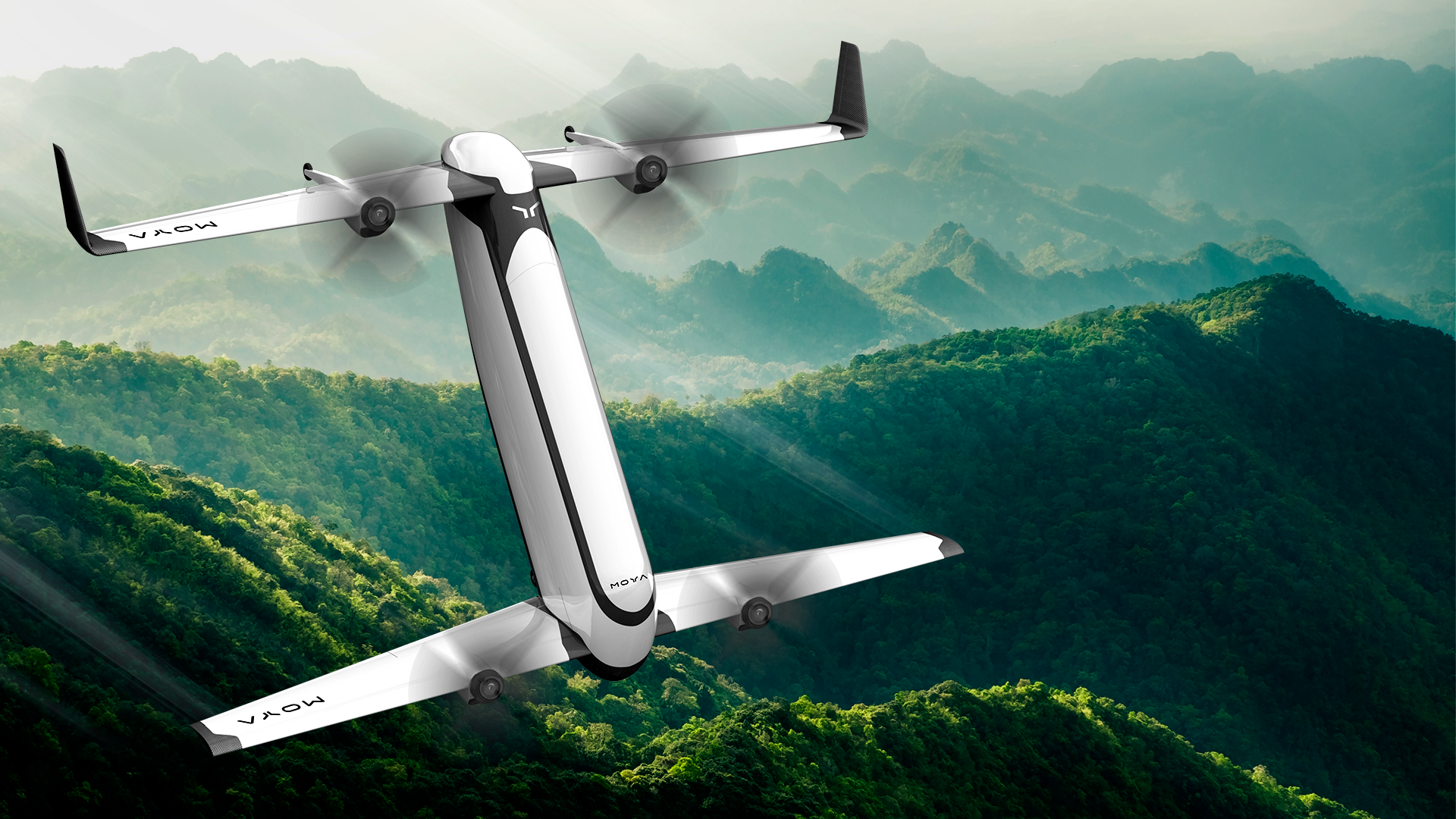Click Here to View This Page on Production Frontend
Click Here to Export Node Content
Click Here to View Printer-Friendly Version (Raw Backend)
Note: front-end display has links to styled print versions.
Content Node ID: 419863
Moya Aero’s efforts to bring an autonomous eVTOL aircraft to market were boosted this week by a $2 million grant from FINEP, a Brazilian government organization that promotes science, technology, and innovation. The start-up, which is a spin-off from aerospace services group ACS Aviation, aims to start flight testing a technology demonstrator version of its all-electric vehicle in September 2023 as it pursues commercial applications such as cargo deliveries and crop-spraying.
Having launched the venture in 2020, co-founder and CEO Alexandre Zaramela says his team has now completed preliminary and critical design reviews for an aircraft that will have a payload of 200 kilograms (440 pounds) and a range of 110 kilometers (70 miles). Moya, which has so far supported its work with the proceeds from a seed funding round and earlier grants, has not published a timeline for getting the unnamed aircraft certified and into production.
The version of the aircraft Moya intends to start flying later this year will be almost full-scale, with a wingspan of around 5.5 meters (18 feet), compared with seven meters for the production aircraft. This smaller proof-of-concept vehicle may eventually be brought to market for some missions.
The design features two pairs of propellers, installed on a tandem wing configuration, each with its own electric motor. Rather than tilting the wings or propellers, the fuselage rotates between vertical and horizontal phases of flight.
Under the current standards of Brazil’s ANAC aviation safety agency, the Moya vehicle is categorized in Class 1, which is reserved for the largest drones weighing more than 150 kilograms. Zaramela told FutureFlight that the regulator has not yet fully established the means of compliance to certify this category of aircraft.
According to company co-founder and chief operating officer Renata Paolillo, agricultural applications for autonomous aircraft could be among the early uses, in part because operations would avoid crowded urban areas while also sparing human pilots from relatively dangerous tasks like crop-dusting. With a flight endurance of 42 minutes, the aircraft would be able to spray around 105 hectares, which she said would represent higher levels of productivity than the largest Chinese-made drones now offer.
Moya sees a gap in the market for larger drones that could fill roles currently occupied inefficiently by light fixed-wing aircraft and helicopters. Paolillo said its eVTOL vehicle will deliver a 50 percent reduction in operating costs compared with current equipment, as well as being six times more productive in crop-spraying exercises than small drones and with 10 times the freight payload.
Initial operations will have some human involvement in supervising flights from ground control centers. Moya is developing the autonomous flight control system in partnership with several undisclosed Spanish and Brazilian partners.
ACS Aviation has some 15 years of experience in developing aircraft with various partners. These include Embraer, the Brazilian manufacturer, which is its neighbor in Sao Jose dos Campos and for which it contributed to early development work on the Eve eVTOL aircraft. ACS also developed the SORA-e, which Zaramela said was the first electric aircraft created in the southern hemisphere, as well as a light sports aircraft with a Chinese partner and a Class 2 drone (up to 150 kilograms).
